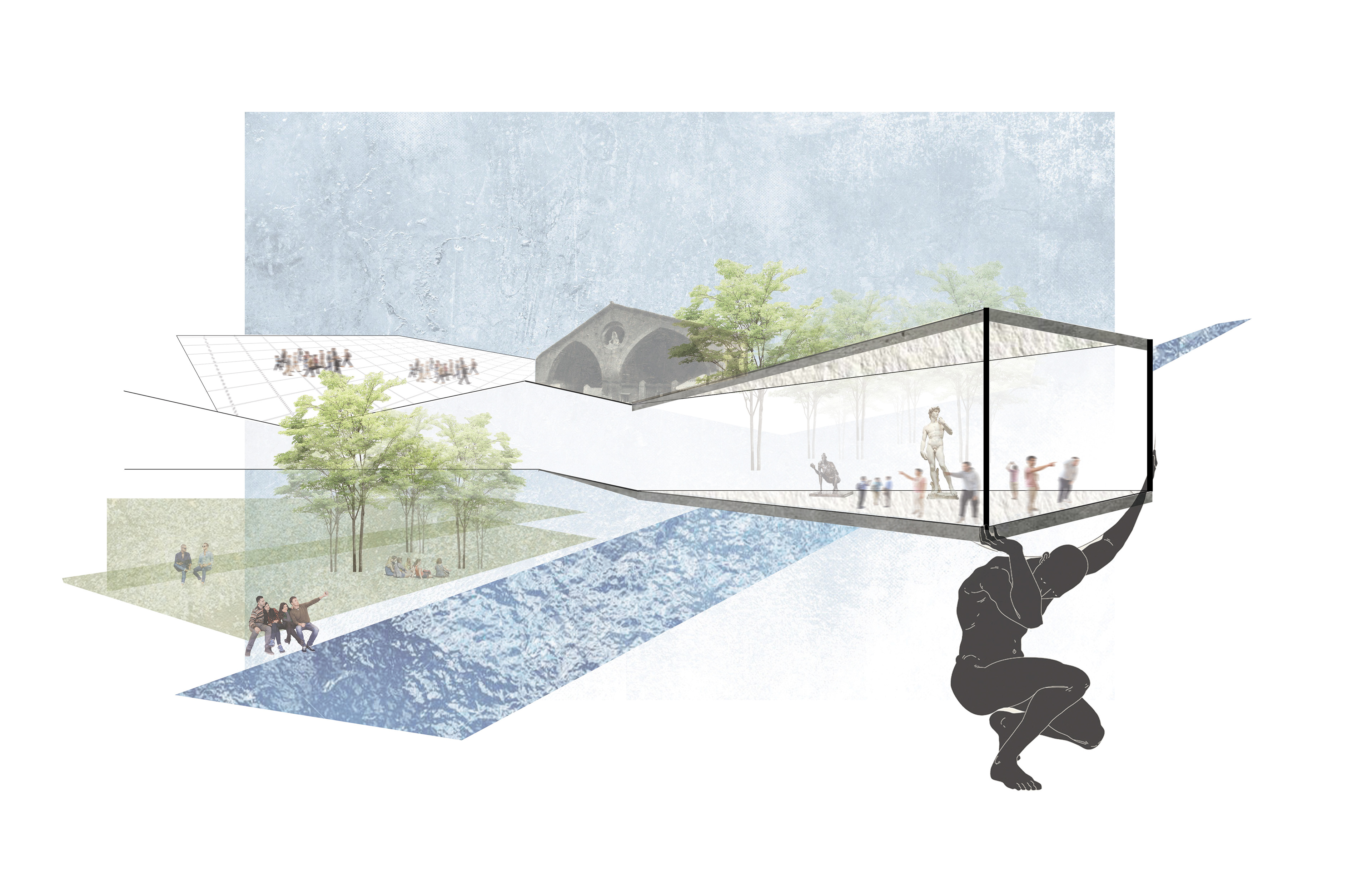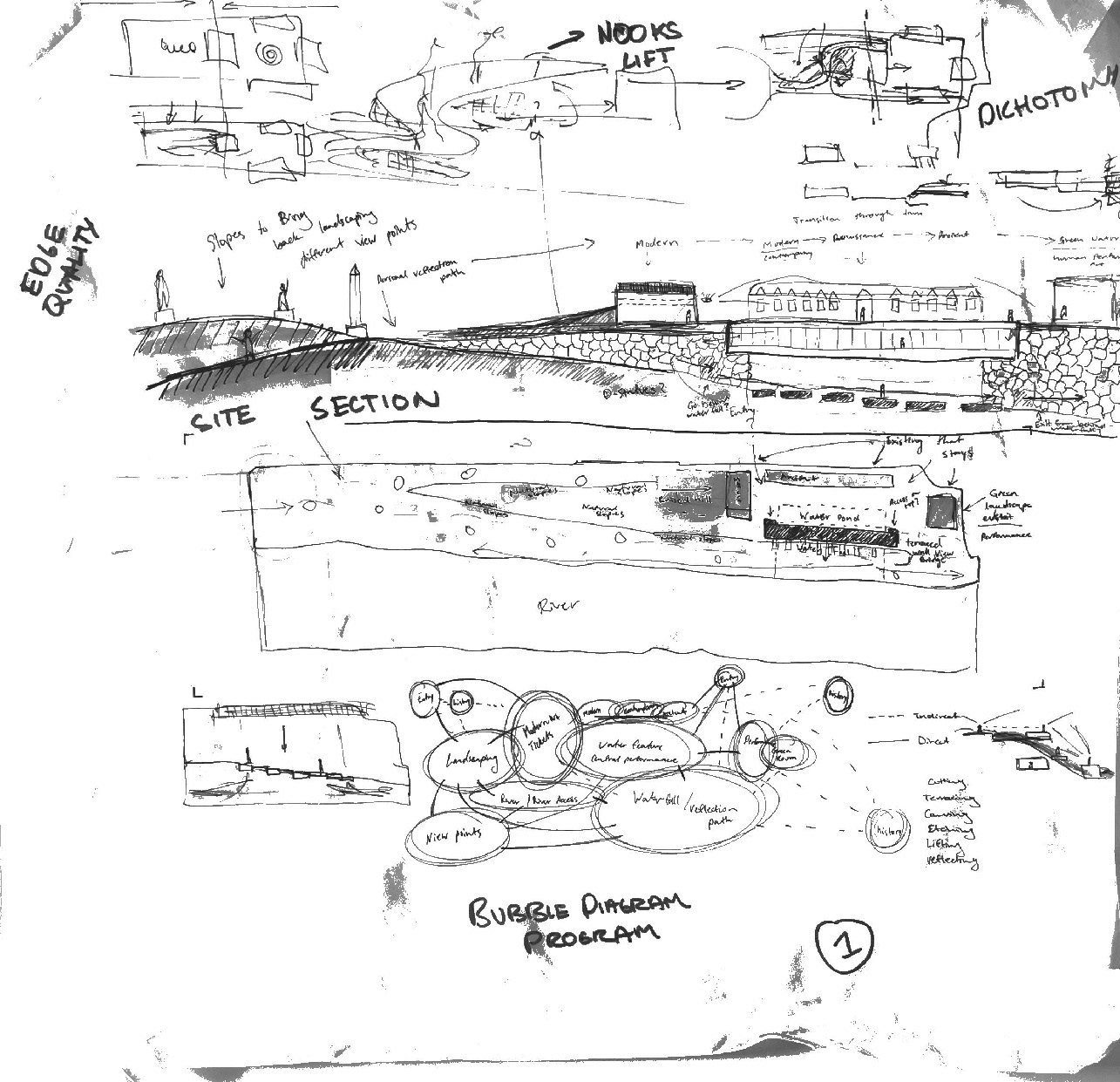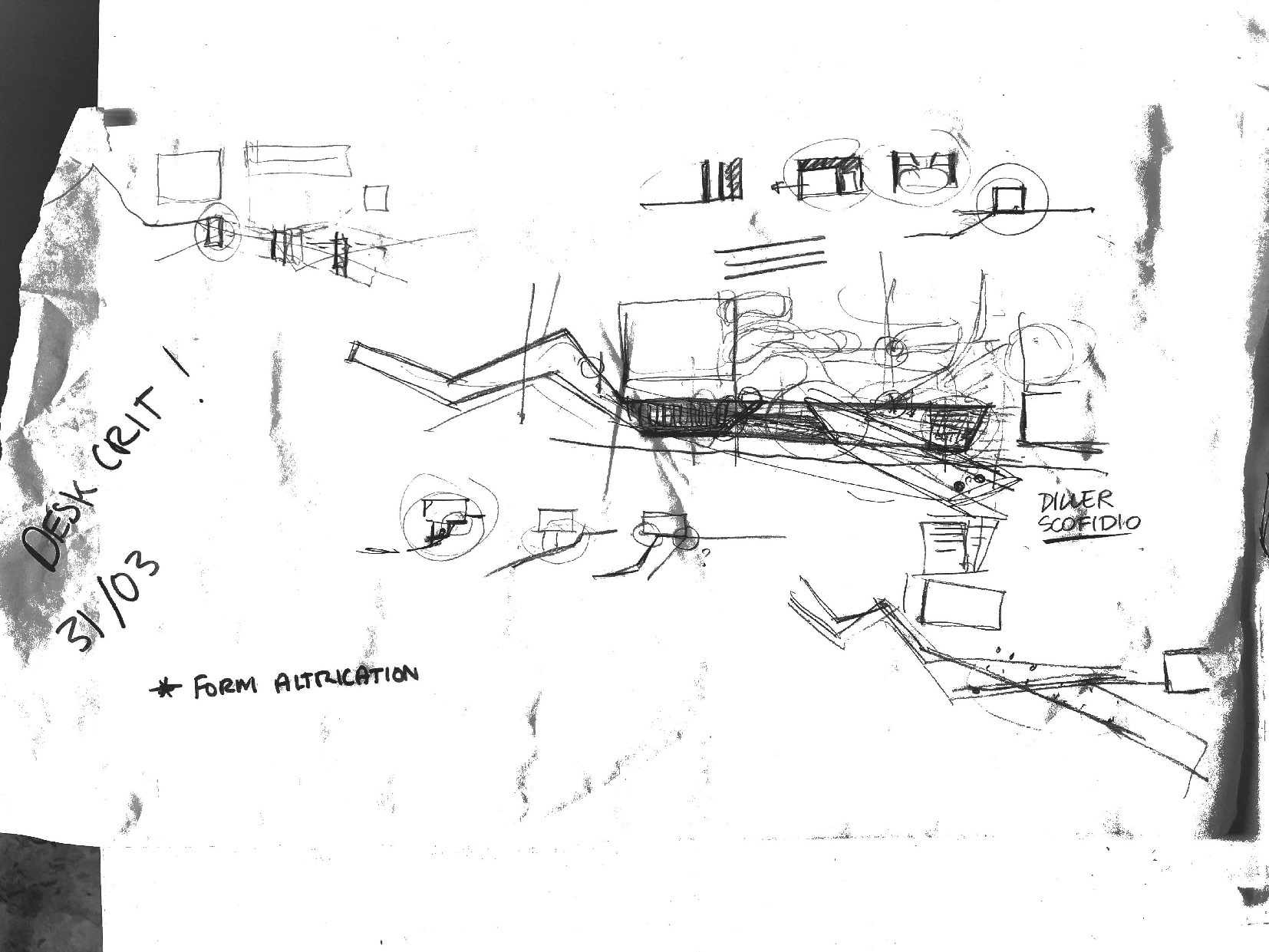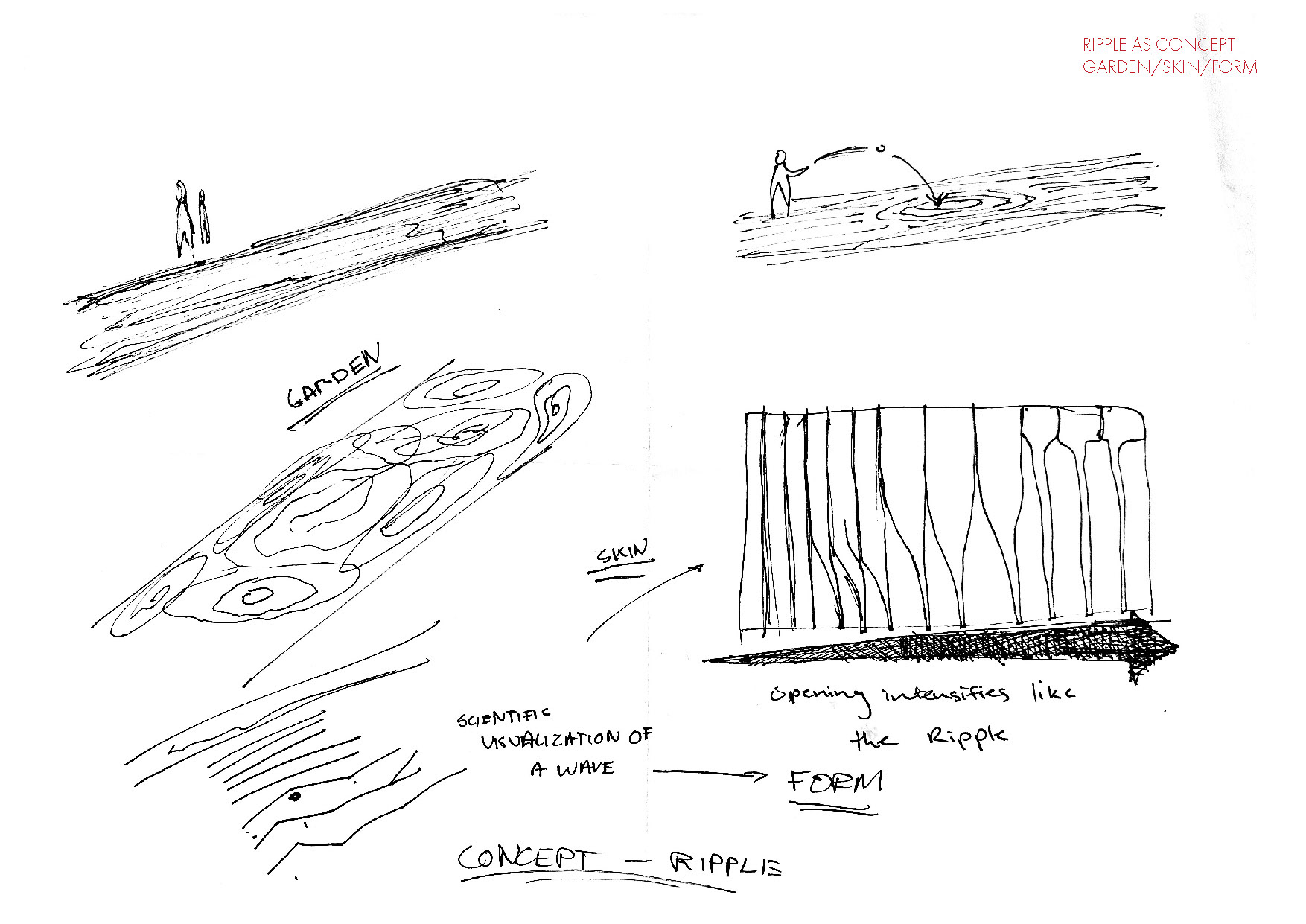RIPPLE
Rome, Italy
41.883266°,12.473805°
Studio: Design VI Architectural Making II
Professor: Bea Bruscolli
Partner: Hishaam Ramoly
Typology: Cultural Center
Construction: Steel & Concrete
CONCEPTUALIZATION
We believe that a museum is a space which acts as a bridge between times.
Through the idea of a ripple, we seek to act in reaction to the space we occupy and remain conscious of the footprint we leave in time. The ethos of the concept lies in its connection between the river, the historical site, and the existing programs on Via Portuense. The strict geometrical condition is a reactionary articulation of the site offering a dynamic form to the modern building, enabling nooks for various programmatic needs. These nooks allow for functions of the street such as the market and circulation to bleed into the site. On the Tevere side, the river banks extend both vertically and horizontally towards the site emphasizing the essence of connectivity between the museum and its stakeholders. The building’s dynamic skin reacts to the sun and views created by the form to allow for interior and exterior synergy. The courtyard of the historical site now edged by the modern condition creates a centralized space which will flaunt gardens and subtle water elements, an auditory and visual connection to the Tevere. These coexisting spaces seek to act to ripple off each other to celebrate the time within patrimony.















An oscillation as a result of a reaction to an initial movement.
The form mimics a wave that comes as a line toward the site and breaks at key nodes.
That moment is then encapsulated into a strict geometry that will define the museum's interior and exterior space.
This choice of inspiration is directly linked to how we see the museum's intrinsic function as to capture moments in time acting as a bridge within patrimony.
The form mimics a wave that comes as a line toward the site and breaks at key nodes.
That moment is then encapsulated into a strict geometry that will define the museum's interior and exterior space.
This choice of inspiration is directly linked to how we see the museum's intrinsic function as to capture moments in time acting as a bridge within patrimony.
“A ripple in time”
